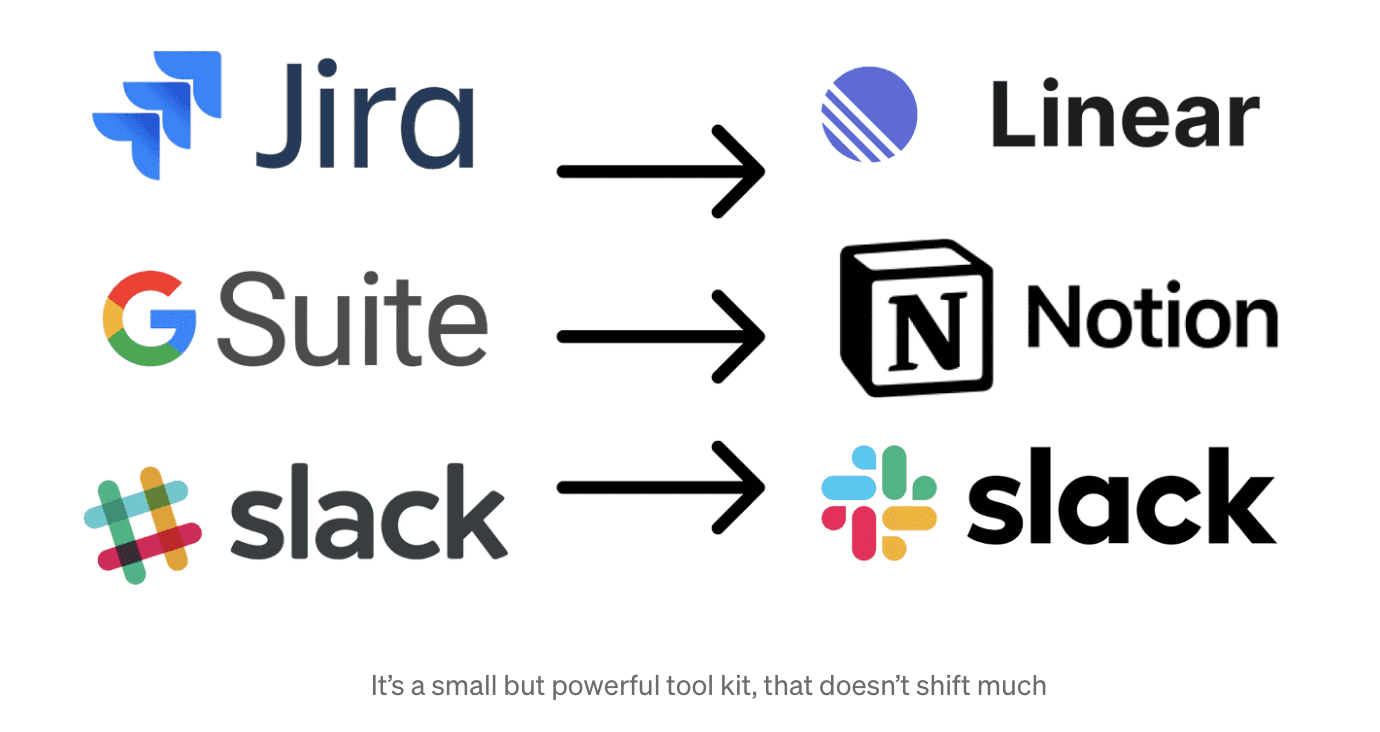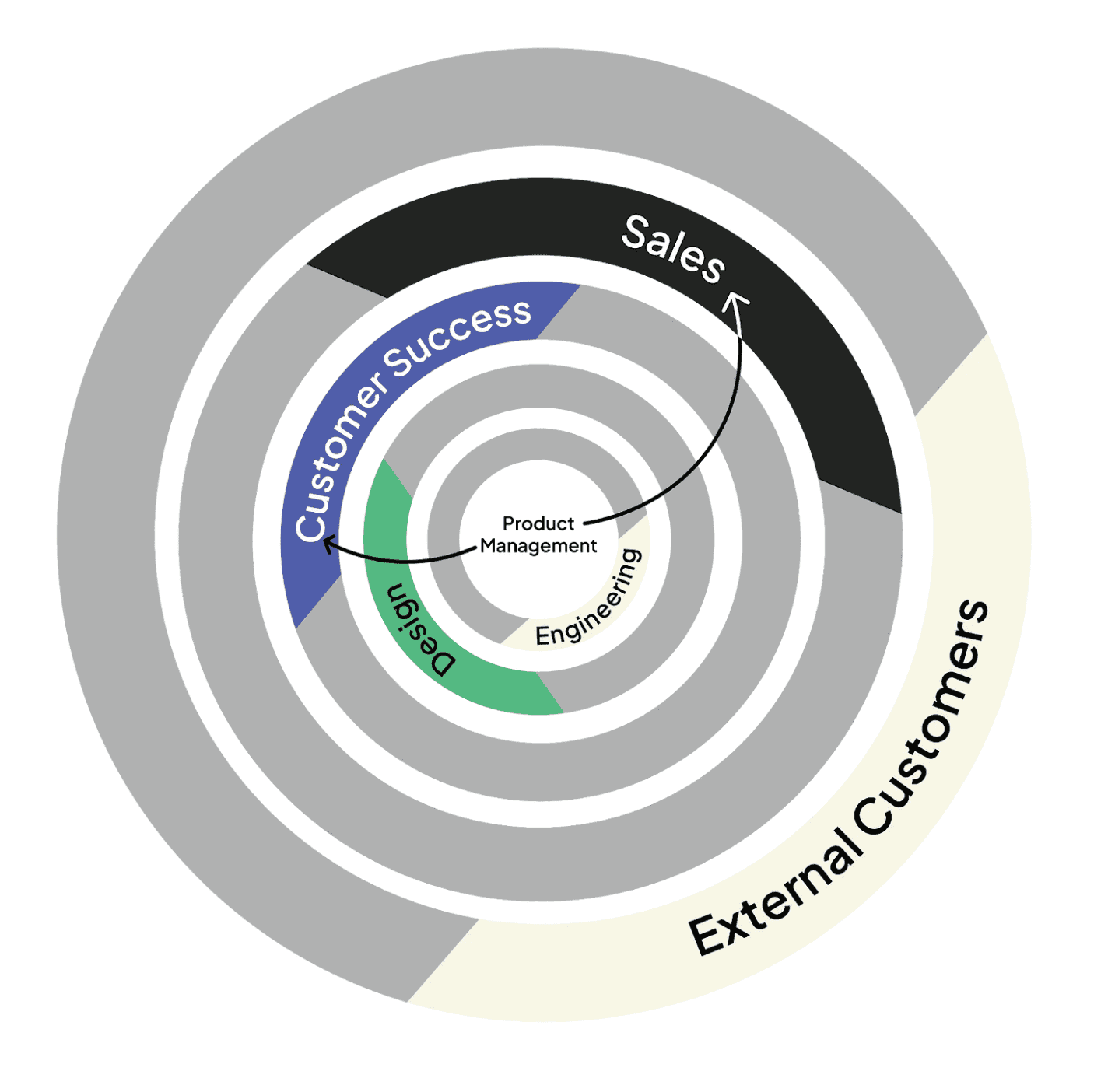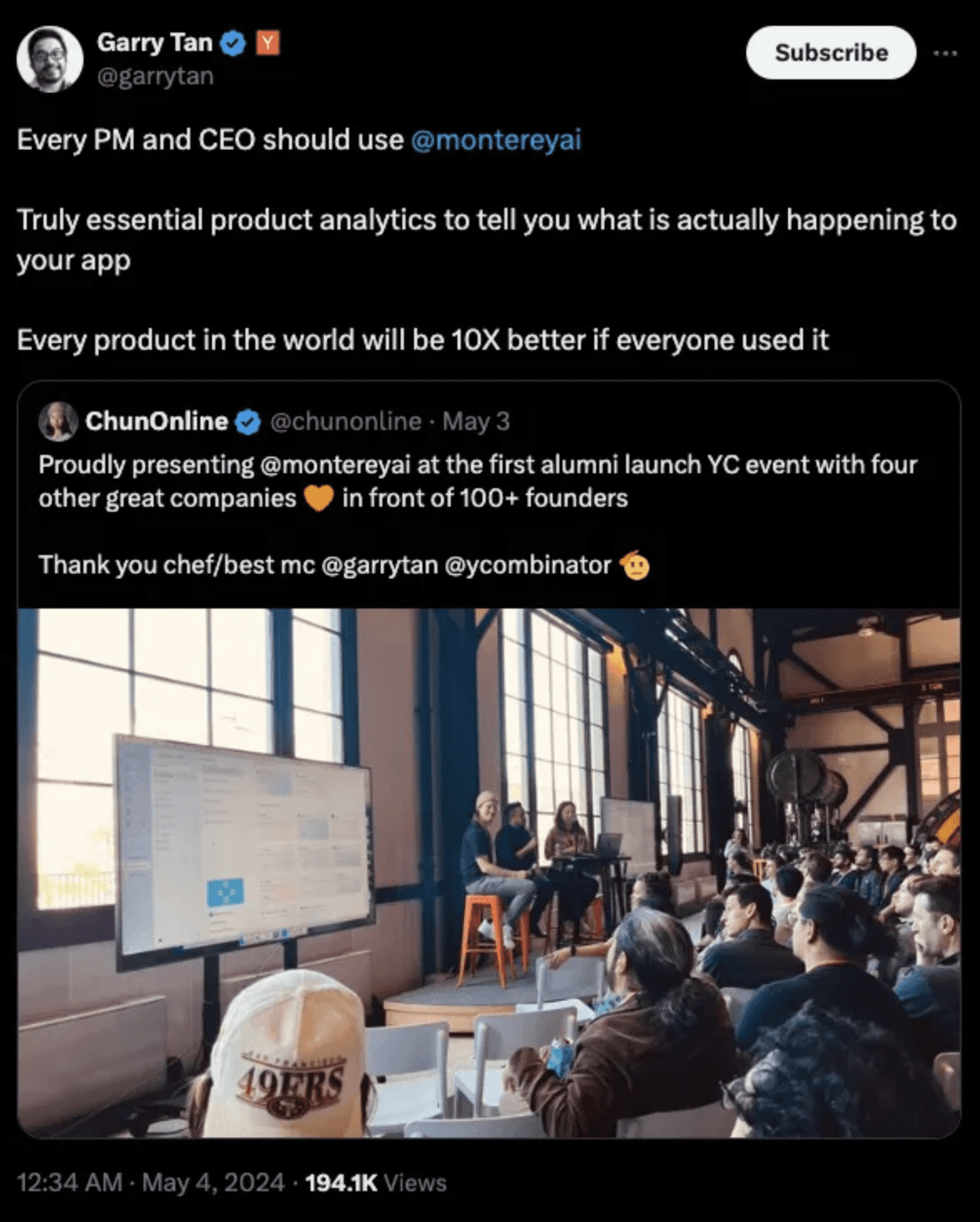AI + Product Management: Transforming Workflows, Processes and Behavior

At Exceptional Capital, we’ve spent the last few months talking with product leaders and product managers (PMs) looking to learn how they’re thinking about the ever shifting software landscape underneath us all, specifically focusing on AI. Of the 20+ conversations we had, we heard how PM orgs are infamous for using very few and specific tools to get their job done, additionally, how high the bar for switching and/or substituting these tools is as well. The current suite looks like this:

A catalyst for this research was news from Airbnb and how they’re looking at the product management function, as well as Marty Cagan’s thoughts on alternatives to PMs — coupled with the advancements in AI, LLMs and systems being able to seemingly reason and generate insights at scale, this caught our attention. We have been exploring the new “PM Stack” and we dig into a few companies below that are exploring these opportunities.
Despite the current ease of access to AI tooling, the development of these products is still very cumbersome, expensive and frankly… unknown in terms of true ROI. The stakeholders across engineering, product, design, CS, Sales, Marketing, etc. are all pivotal in creating world class software but this post will focus primarily on Product Management. PMs have an incredibly unique function within organizations as the “Inspector Gadget” and glue (or an analogy that made more sense to me, the Shane Battier of the basketball world) between stakeholders. They own a very strategic, creative and yet intuitively/behaviorally driven portion of these processes and workflows (especially when it comes to the tools they choose to engage with and use). Over the course of this deep dive, it was incredibly interesting to hear how not only workflows and processes will need to be reworked but how behaviors will likely need to change as well. Reshaping how teams approach product development and management will be crucial as organizations become infused with AI. This potentially creates a new landscape where efficiency meets innovation, leading to augmented/automated operating cadences that we’re just beginning to understand.
The end result was focused around how AI will impact and enhance PMs when it comes to decision making, streamlining workflows, collaboration and customer insights.
AI-Driven Decision Making
One of the most significant potential impacts of AI in product management is its ability to enhance decision-making processes. AI algorithms can analyze vast amounts of data much faster than humans, providing insights and recommendations that were previously unattainable or simply unseen. This capability allows PMs to make more informed decisions quickly, reducing time-to-market and increasing the precision of product strategies.

That said, there is a lot of “art” vs/plus “science” while determining product strategy and roadmap so creating tools that improve the “art” and are not intrusive to the “science” (workflows) is paramount. Enhancing and augmenting a PM’s ability to make informed decisions is arguably more important than automating the decision all together. A Seed company we’ve invested in, currently in stealth embodies this mission — They are looking to empower their customers to make better, data-driven decisions faster. They transform product data into actionable insights, providing clear guidance for product teams. Their outputs provide clarity and optionality surrounding product context and direction. Now with current iterations of AI and LLMs, these insights are produced by both qualitative and quantitative data.
Streamlining Product Development Workflows
The product development life cycle looks a bit a like this:
Idea/Hypothesis > Research > Validation > Requirements > Specs > Architect/Build/Test/Deploy > Monitor
There are a lot of steps within that cycle… More steps = more noise and more noise = higher likelihood of bottlenecks and delays. A product leader told us, “It’s a TRUE pain to coordinate between the PM → CSM → Customer around timelines for fixing bugs.” However, each step and handoff is an opportunity for efficiency potentially driven by AI and these tools are becoming integral in streamlining these workflows and the steps in between. From automating routine tasks like data entry and analysis to more complex processes such as user testing and feedback integration, AI is freeing up product teams to focus on more strategic and creative tasks. It also opens up pathways for data coming from different teams that in the past may not have had as much exposure or input on the product development life cycle. We heard from other product leads that PMs mostly engage with Engineering and Design, mentioning that, “the flow from PM to CS/Sales has always felt wonky as things are heavily centered around user feedback and iterative loops”. This leaves CS, Sales and Marketing a couple degrees removed and a lot of potentially valuable data out of those iterative loops — But what happens if you bridge the gap directly from CS to PM using better connective tissue?

This shift could boost productivity and also enhance the quality of the products developed, as teams can spend more time refining and iterating on their ideas.
Enhancing Communication Across Teams
Communication is key and the “crown jewel” of product management. AI is set to transform how teams interact and work together as well. Tools powered by AI can help bridge communication gaps between different departments, ensuring that everyone is on the same page. Whether it’s aligning the engineering team with marketing or ensuring customer support has real-time insights into product changes, AI facilitates a more cohesive comms position that can adapt quickly to new information or changes within the company/org or even external shifts in the market.
Digging a little deeper, we found another interesting use case involving “product comms” from Korl.co, specifically around building and maintaining alignment on product direction/roadmapping across various internal and external stakeholders. “This is one of the most repetitive and time-consuming operational tasks product teams face. Yet it is critical to launching and landing a product feature successfully”, Berit Hoffmann, CEO/Founder of Korl.
Korl looks to automate and improve these channels of communication to save time and increase consistency, ultimately improving stakeholder alignment. It treats tools like Jira, Linear, Figma, GDocs, Notion, etc as detailed data sources that combine AI with deep business context and can automatically generate polished and consumable artifacts (decks, presentations) tailored to a particular end user/audience. The hope being that less time is spent on tedious tasks like deck creation, review and revision and more time on knowledge work all without PMs workflows being disrupted.
Predictive Analytics and Customer Insights
AI’s ability to predict trends and customer behavior is another transformative aspect for product management. By leveraging predictive analytics and “voice of the customer”, PMs can anticipate market demands and adjust their strategies accordingly. This proactive approach not only helps in staying ahead of the competition but also ensures that the product remains relevant and meets customer needs over time.

Chun Jiang of Monterey AI shared with us that when discussing current use cases of AI (within the product development life cycle), the unsung hero is the ability of LLMs to understand and synthesize information, which is crucial for the generative process. Mapping that into the product development process, LLMs can alleviate the time consuming and burdensome task of reading and categorizing qualitative and unstructured data to extract valuable user feedback. Chun mentions, “Without feedback, developing customer intuition is impossible. Product teams that lack this customer intuition are inevitably at a disadvantage, unable to create the best possible product or elevate the current one to the next level, regardless of their vision.” In this way, PMs, alongside engineers and designers, may benefit tremendously from the more efficient iteration across various elements of product development.
Challenges and Considerations
While the integration of AI into product management brings numerous benefits, it also presents challenges. The accuracy of AI predictions depends heavily on the quality of the data fed into the system. PMs must ensure that data is not only abundant but also clean and well-organized. Additionally, there’s the challenge of integrating AI tools with existing systems and workflows, which can require significant time and resources.
Understanding the system design of any AI platform is the first step to solving these challenges and the product leads we spoke with all mentioned specific questions to make sure any PM asks themselves and stakeholders involved:
What training data will you need to gather?
What is the frequency in which you need to update the model?
How long will the model take to prototype?
How many weights are needed and which weights are most important?
What is the output metric you’re measuring?
Which team will put the AI system into production?
Ultimately…
The future of product management + AI is not just about automation; it’s about augmenting the capabilities of PMs to achieve more than ever before. As we continue to explore and integrate AI into product management practices/workflows/processes, we must be mindful of the challenges and ensure that these tools are used effectively and within the behavioral frameworks discussed as well. The journey is just beginning, and the possibilities are vast!
Thank you to the Product Leaders for the insights/expertise from Pinterest, Doordash, Airbnb, Meta, Uber, Flexport, Datadog, Slack, Hasura, Samsara, Shopify, Notion, Dropbox and Adobe as well as the founders of Monterey AI, Korl and a stealth portfolio company.




